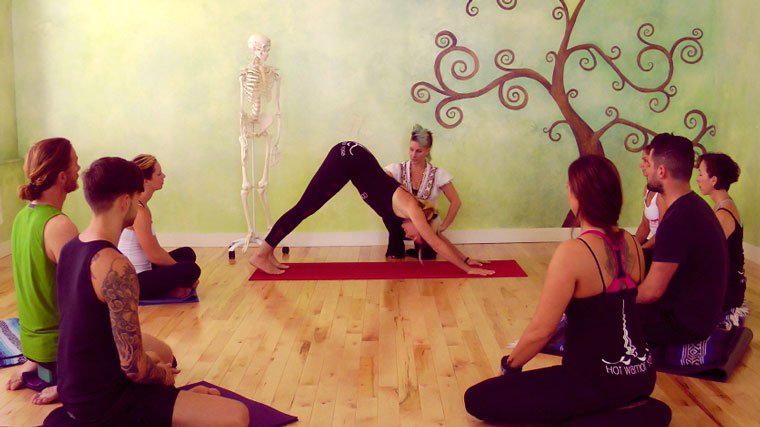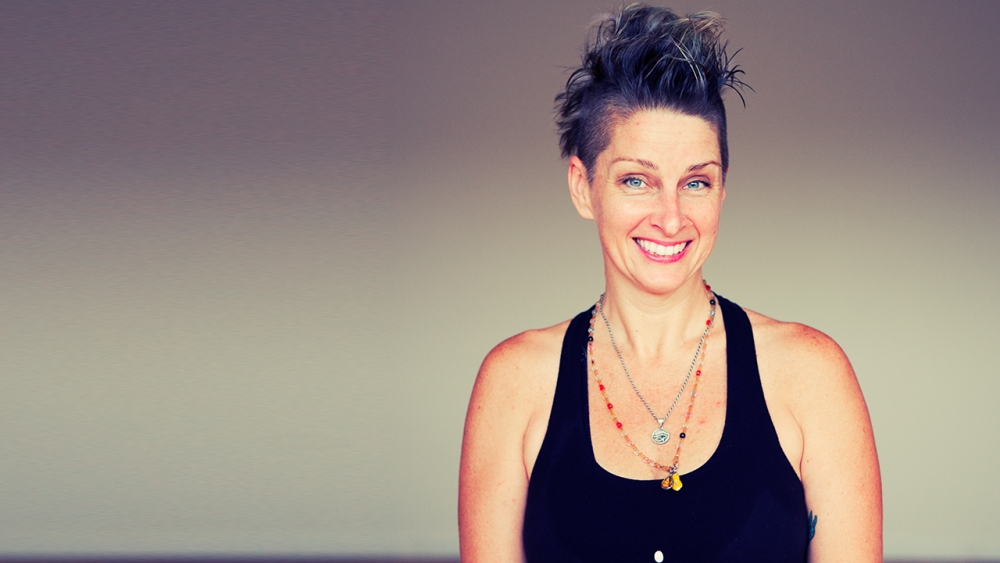It’s very exciting, this Vinyasa yoga revolution we’re having! More and more people are walking into studios and gyms to try classes described as Power Flow, Hot Flow, Cardio Flow, Core Flow and Slow Flow. It is a mass movement towards radiant health of both body and mind; an energetic and dynamic movement that is creating positive changes worldwide!
Unfortunately, sometimes newcomers to Vinyasa flow yoga will find themselves in a mixed-level, or non-beginners’ class, whether it be through a scheduling choice, a friend’s introduction or simple ignorance that there are many different types and levels of modern day yoga. Whatever the reasons are for entering an inappropriate level yoga class, Vinyasa flow teachers everywhere are faced with a very frustrating dilemma: how do we teach a safe, injury-free flow class and still teach the title/level that is on the schedule, to what’s expected by the majority of the students?
In a perfect world yoga teachers would be able to teach specifically to the needs of each individual student. There are indeed yoga studios and classes where this is their primary goal and mission. This article is offered to those of us teaching more mainstream flow classes (60 or 75 minutes of Hot Rockin’ Vinyasa!) to upwards of 30, 40 even 60 people per class.
7 key ways to teach a safe, multi-level Vinyasa flow class
1. Start class with shoulder joint integration
After centering on the breath and during the warm-up (of joints and muscles), add shoulder joint integration exercises with straps and blocks. Watch my Chaturanga homework class for some shoulder joint integration ideas.
2. Get off your mat & walk around the room
In order to see what’s going on in the back of the room where most new students hesitantly (and bravely, I might add) roll out their mats to practice, you must leave your mat and walk around the room. You need to see them and they need to see you! Even demonstrate next to them sometimes – smiling and giving the thumbs up!
3. Give clear, concise alignment cues
Even advanced practitioners can benefit from the general alignment cues that help to prevent injuries to the major joints. Granted, all alignment cues don’t work for every body type but there are common injurious mistakes made by new students that need to be avoided.
These include:
- front knee collapsing inward in Warrior 1 and 2;
- back arch and knee collapsing in Warrior 2;
- back foot turned out beyond a 90-degree angle in both Warrior 1 and 2;
- shoulders dipping below elbows in Chaturanga;
- groin leading the way in Chaturanga;
- hanging out on thumb and finger joints/ligaments (especially in Down Dog transitions).
Keep your instructions simple and watch your language! New students will take you for your word. Try to avoid abrupt and possibly injurious words such as “drop”, “grab”, “shove”, “kick”, “hang”, “whip”, “throw”, “crunch”, “lock” etc.
4. Always offer variations: go from easy to hard to empower everyone
Dangle the tasty organic carrot! It is empowering to hear phrases such as “stay here or…” and “if you can try…” versus disempowering phrases such as “if you can’t…”, “if it’s too hard…” or “if you have to…”. For example, offer knees down for Cobra before offering Chaturanga to Upward Facing Dog, offer knee down for Gate before offering Side Plank and more difficult variations, and offer kickstands (when the toe is on floor or on a block) for Eagle and Tree before the higher/ fuller expressions.
5. Workshop moments

Taking breaks from the flow to demo or discuss a pose are a great time for new students to take a water/breath break and for advanced practitioners to show off their hard work and diligent practice. If new students are flailing, have them pause and find themselves in yoga postures such as yoga squat (Malasana) or sitting on heels (or the toes-curled-under variation). Then talk the advanced students through poses such as Chaturanga Dandasana (and the flow to Upward Facing Dog and Downward Facing Dog), inversions and deep backbends. Usually I will have the advanced practitioners do two rounds of the flow or pose and then have the new students join in on the third. Everyone is always so happy with this empowering and all-inclusive practice-building technique!
6. Fewer Chaturangas – more abs & backbends
In my personal opinion, I feel that no human shoulder girdle needs the weight/load bearing repetition of 30-50 Chaturangas in one practice! We have to remember that the flows serve a purpose – to warm-up the body and challenge in order to strengthen the internal systems in such a way to prepare for later stretching and relaxing. If you want to make the practice more challenging (hopefully for the purpose of strengthening or detoxifying) you can always add more abs strengthening exercise and more backbends! Or have them hold the poses longer – talk about POWER…the power of holding still and focusing the mind on the breath!
7. Don’t skimp on the cool down
The great thing about a challenging Vinyasa flow yoga class that it is a YOGA CLASS and not a cardio exercise class in a gym. It is very important that we effectively cool down our students on the floor intelligently. After abs and backbends, dive through the layers of tension in the hips with hip openers, calm the nervous system and stretch the back body with forward bends, massage the internal organs with final spinal twists and rest (really rest) both the body and the mind in a relaxation posture such as corpse pose (Savasana) or legs up the wall (Viparita Karani).
In conclusion, we don’t have to sacrifice a fun, challenging, dynamic, Burn-The-Dukkha-Away practice in order to offer an intelligent, safe, injury-free yoga class. Following the aforementioned steps will ensure that everyone in our class leaves healthy, happy and excited for MORE, MORE, MORE YOGA!!! Remember…SAFE YOGA ROCKS!
- Read more articles by Jennilee with tips for yoga teachers, anatomy insights and ways to stay injury free in your practice.
Now you can study online with the EkhartYoga Academy
Learn how to create inspiring, well-rounded and safe yoga classes in a 6-hour course with Esther Ekhart – The Art of Sequencing

